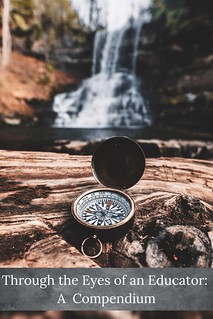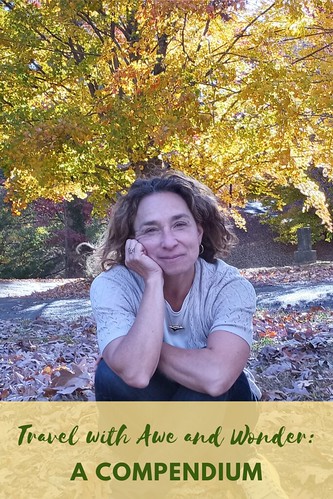Working-Class Kids and Visionary Educators in a Multiracial School: A Story of Belonging
Today’s high schools—constrained by low expectations for working-class kids, limitations on teachers’ autonomy, and more segregation than 50 years ago—find it challenging to create an environment that cultivates engagement, learning and a sense of belonging. They can learn something from the successes of the past.

Sunnyvale High School (SHS) opened its doors to a diverse student body living in blue collar neighborhoods of California’s Bay Area in 1956. Built to accommodate the families of workers recruited to work in area canneries and burgeoning silicon industries, its leadership created a school culture that made students want to attend school and find a place for themselves on campus. Key to its success was hiring teachers who were skilled at working with adolescents.
As the second principal in a new school, Adrian Stanga hired “a core of excellent teachers” who enjoyed working with teenagers. They could connect with the blue-collar, racially integrated student body.
Stanga sought “people who understood the learning process,” who could work with students not just who excelled academically, but those who the school identified as “slow learners.” He wanted to build a school culture that incorporated all students. The principal could choose among the candidates the district office recommended for a teaching position. At that time, according to a teacher who later became principal, Paul Sakamoto, principals “had quite a bit of autonomy in running the school.”
Teachers needed to have special skills in relating to adolescents. From SHS administrators’ perspective, good teachers were “able to establish rapport with students, primarily. And we assumed that they knew their subjects since they were majoring in that subject. . . . We were more concerned about how well they communicated their subject matter to students.” Sakamoto reflected, “In Sunnyvale we did probably a better than average job of that, especially with teachers like Buzz [Carolyn Buszdieker], who had the ability to relate to kids in such a way that they didn’t feel that it was like a prison.”
Nearby San Jose State University was the logical source for new teachers. Its robust teacher training program placed student teachers in schools and collaboratively supported them. Its philosophy of experiential learning was innovative at that time. Those who earned teaching certificates at San Jose State were often the first in their families to attend college. In effect, they were good role models for Sunnyvale students. Later, the district also hired graduates from Stanford University’s education program.
Carolyn Buszdieker was one of those San Jose State graduates who had done her student teaching at nearby Fremont High. She had known Adrian Stanga from the days when he was her high school typing teacher. Stanga hired Buszdieker to teach physical education at Sunnyvale High. She quickly became head of the department. Tall, comfortable in her body and especially adept at cultivating social relationships, she had an easy laugh. Her affability helped foster a culture where interpersonal bonds could form. She delighted in teasing students, as lightheartedly as their loved ones and friends often do, but was careful to never do so in a way that mocked or demeaned them. It wasn’t all fun and games. Buzz played a key leadership role across campus, setting a tone of respect while advocating for female athletes and girls in general.
The emphasis on rapport with Sunnyvale kids favored teachers who were from working-class backgrounds themselves. In 1966, after Stanga became a district administrator, Paul Sakamoto was promoted to principal. As dean of boys, head of the science department, and now principal, he embraced his predecessor’s philosophy of bringing working-class students into a wide range of school activities and developing personal relationships with them. As the eleventh child in a Japanese family who were sharecroppers on a farm they were forbidden to own, he knew poverty as well as vicious discrimination first hand. Just eight years old when war broke out between the US and Japan, Sakamoto and his family were evacuated to Rohwer concentration camp in Arkansas. Like all Japanese immigrants and their US–born children, his family fell victim to President Roosevelt’s heavy-handed Executive Order 9066 targeting Japanese and Japanese Americans. Forced to leave their homes and jobs, they had to work without pay while confined in remote locations. US citizenship offered no protection for native-born children like Paul. Although two-thirds of Japanese Americans incarcerated were US citizens, their civil and property rights were summarily disregarded (Erika Lee, The Making of Asian America: A History (New York: Simon & Schuster, 2015), 212.). Adding insult to injury for the Sakamoto family, three of Paul’s older brothers served in the US military while his family was interned as “enemy aliens.”
Later in the 1960s, Sakamoto insisted that students needed to learn about each other and their family backgrounds. He began hiring former SHS students who were first-generation college graduates. Remarkably, at least seven former students returned to work at Sunnyvale. Jim Miller, president of the class of 1964, pointed to a self-selection process that attracted him and other educators to SHS. The administration “thought it was important to be good mentors . . . they really cared about making a difference.” He reflected, “It was good to be young and enthusiastic. . . . Even in the math department, we tried to make things interesting.” A rare SHS graduate who attended an Ivy League school, Miller chose to return to Sunnyvale after getting his teaching credential and finding his student teaching at a nearby middle-class, racially homogenous school in the district, less exciting. According to Sakamoto, this dedication and set of values made “the faculty more committed than [at] most schools.”
Science teacher Bob Douglas, born and raised around the oil fields of Bakersfield, California, elaborated: “Paul Sakamoto recruited a cadre of younger teachers that were second to none. I mean, they were incredible English teachers and physical education people and science people . . . very dynamic people.” Douglas credited the school leadership, especially Sakamoto, for envisioning change and assembling an innovative team. Sakamoto instituted key changes at Sunnyvale High. Above all, he put students first. “He didn't always do things for the comfort of the faculty. He really looked at kids and looked at the kinds of experiences that kids needed to grow and become successful adults. And he tried to plug that into the curriculum.”
Importantly, success was not narrowly defined. It included involvement in the community, citizenship, and doing meaningful work. In 1970, English teacher Peggy Hurt explained the approach to the student paper, The Skywriter: “This foundation provides you with basic learning tools such as asking questions, listening to others’ opinions, growing empathy with others and their views, and gaining awareness and confidence in yourself, your thoughts and your feelings” (4 March 1970).
Students benefited from working with these educators because they had the opportunity to engage with them in a sustained way – inside and outside the classroom – creating a kind of social glue in the community.
For a fuller account of Sunnyvale High and its remarkable teachers and students, read my book, Working-Class Kids and Visionary Educators in a Multiracial School: A Story of Belonging, forthcoming in paperback from Bloomsbury, September, 2025.
Karen V. Hansen, Ph.D., is a historical sociologist, the Victor and Gwendolyn Beinfield Professor of Sociology, Emerita, and professor emerita of Women’s, Gender, & Sexuality Studies at Brandeis University. She is the author of several books on community, labor, and race.
Find her at https://www.karenvhansen.com/
© 2024 Karen Hansen, Working-Class Kids and Visionary Educators in a Multiracial High School: A Story of Belonging. Reprinted with permission from Bloomsbury Publishing.
-

- Log in to post comments




















